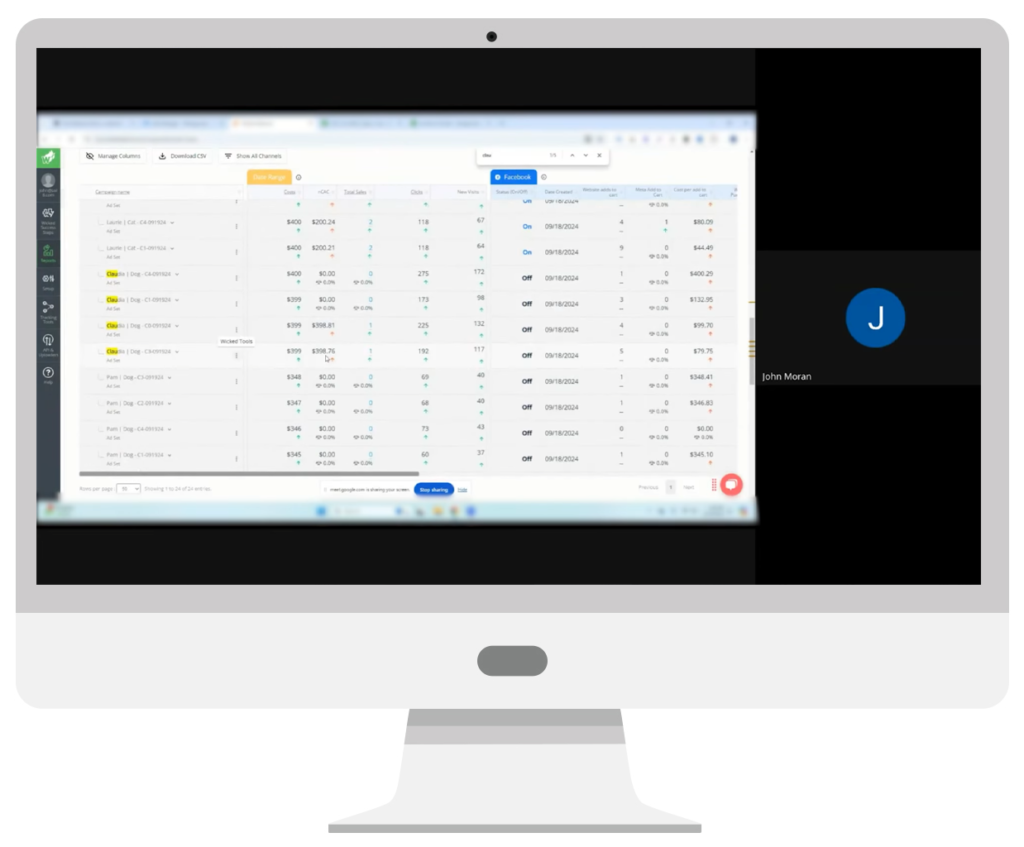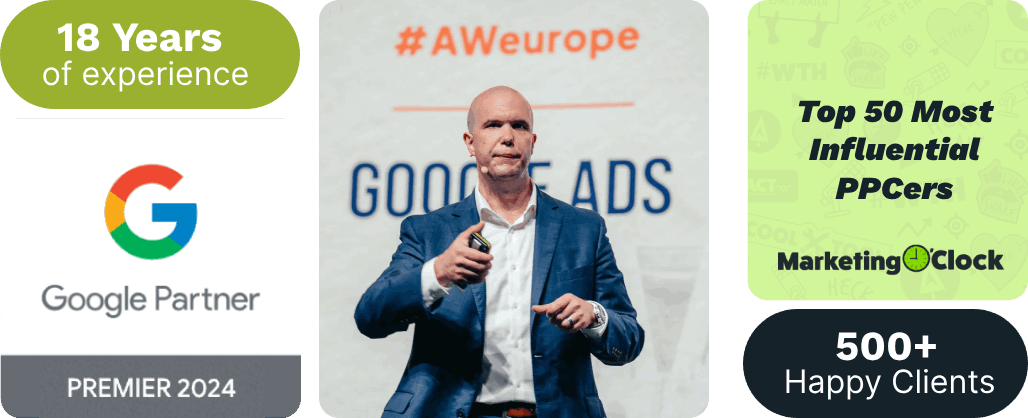Are you running Meta Ads and looking for creative strategies to boost performance?
Get ready to go old school with Solutions 8 Chief Strategist John Moran.
In a recent team training, he shared a new approach he has been working with that uses horizontal scaling to help clients reach a broader audience with their Meta Ads campaigns.
You can learn more about the L0 approach and see examples in this video, or read on for a quick overview of the strategy.
What is the L0 approach?
In a nutshell, the L0 (L-zero) approach involves taking the average of five identical campaigns to see what’s working and what’s not.
According to John, “This L0 campaign essentially is a CBO, open-target, customers excluded, no bid or cost cap, maximize conversions, and it is using five duplications of an ad at $100 per day each.”
And what he has been able to identify and compare using this strategy is the average of the first-click accrual new customer acquisition costs (nCACs) over a seven-day time period. He then uses that data to judge each campaign in terms of performance.

Taking a deeper dive
In the video, John uses a spreadsheet to illustrate how it works. (You will notice that each campaign is given a name, for example Claudia, Diane, Laurie, or Suzanne.) Keeping in mind the seven-day window, he points out that after four days, Claudia has a $399 nCAC with five different ads running at $100 a day.
He admits we may be jumping the gun a little bit since the full seven-day period has not yet run its course; however, after those seven days, anything below a $300 nCAC gets cloned (meaning five Claudias turn into 10 Claudias, five Dianes turn into 10 Dianes, and you get the idea), and anything above $300 gets paused.
Because we are using only one week per campaign, let’s say we have five new ads when we start the campaign (day one of seven). Those five ads are now stuck in that one campaign forever. And as they progress, says John, we find that there are always clear winners and losers. Once they have been identified, the process starts all over again.

A few quick rules about this strategy:
- It is always an average of five, so you get five data points of seven days each at $100 per day.
- If the nCAC is between $300 and $400 in the first four days, it gets more time.
- After four days, if the group of five are collectively above a $450 nCAC, the whole thing gets paused.
- The campaigns are all exactly the same; everything is completely identical.
- The audience is all broad.
- By day seven, anything below a $300 nCAC immediately gets cloned; anything above $300 immediately gets paused.
- Any time we add new ads, it’s always incremental. Ad spend from the paused ads is used for cloning and then we add on new.
- After seven days, nothing gets changed in the paused campaigns. Instead, a new campaign is created every week, and the creative is always from scratch.
Bottom line: “If it works, it gets cloned. If it doesn’t, we add new ones.”
Note: This strategy is still in the early stages.
According to John, “We’ve been doing this for the last three weeks and it’s been kind of hit or miss with our consistency.”
They haven’t quite hammered out all the details yet, but the strategy seems to be an effective means of measuring what works and what doesn’t, which allows us to optimize the overall campaign strategy from there.
In the video, Usama points out that this is essentially an old-school, horizontal scaling strategy (i.e., running multiple campaigns simultaneously to broaden reach). John agrees, and adds that we have to measure this by topline metrics, period. Which makes sense, because you’ve heard us say again and again that you can’t rely solely on in-platform metrics.
While they may never get it to be completely accurate, if we can establish a set of rules, says John, then we can then hand off those rules to the client as a roadmap for success.
Let us know if you have success with the L0 strategy!
Author
Pamela is the Senior Content Writer at Solutions 8. When she's not writing, you can find her hiking in the woods with her dogs. She is currently on a quest to visit every national park in the United States.
 Pamela Sapio
Pamela Sapio










